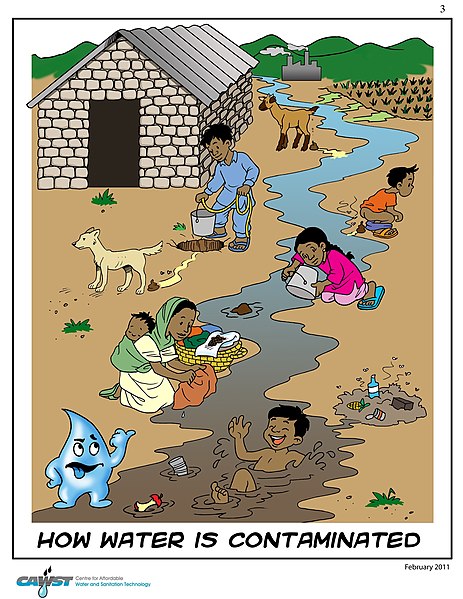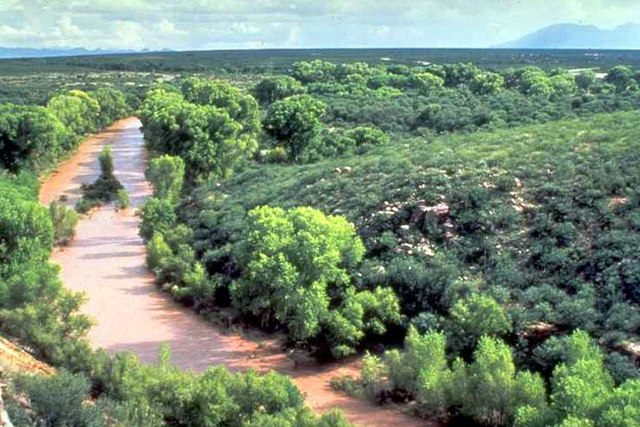United States regulation of point source water pollution
Point source water pollution comes from discrete conveyances and alters the chemical, biological, and physical characteristics of water. In the United States, it is largely regulated by the Clean Water Act (CWA). Among other things, the Act requires dischargers to obtain a National Pollutant Discharge Elimination System (NPDES) permit to legally discharge pollutants into a water body. However, point source pollution remains an issue in some water bodies, due to some limitations of the Act. Consequently, other regulatory approaches have emerged, such as water quality trading and voluntary community-level efforts.
The Deer Island Waste Water Treatment Plant, serving the Boston, Massachusetts area, is a typical point source discharger.
Most electric power plants are direct dischargers.
A silt fence, a type of sediment control, installed on a construction site
Water pollution is the contamination of water bodies, usually as a result of human activities, that has a negative impact on their uses. Water bodies include lakes, rivers, oceans, aquifers, reservoirs and groundwater. Water pollution results when contaminants mix with these water bodies. Contaminants can come from one of four main sources: sewage discharges, industrial activities, agricultural activities, and urban runoff including stormwater. Water pollution is either surface water pollution or groundwater pollution. This form of pollution can lead to many problems, such as the degradation of aquatic ecosystems or spreading water-borne diseases when people use polluted water for drinking or irrigation. Another problem is that water pollution reduces the ecosystem services that the water resource would otherwise provide.
Poster to teach people in South Asia about human activities leading to the pollution of water sources
Bauxite residue is an industrial waste that is dangerously alkaline and can lead to water pollution if not managed appropriately (photo from Stade, Germany).
Muddy river polluted by sediment
Solid waste and plastics in the Lachine Canal, Canada







